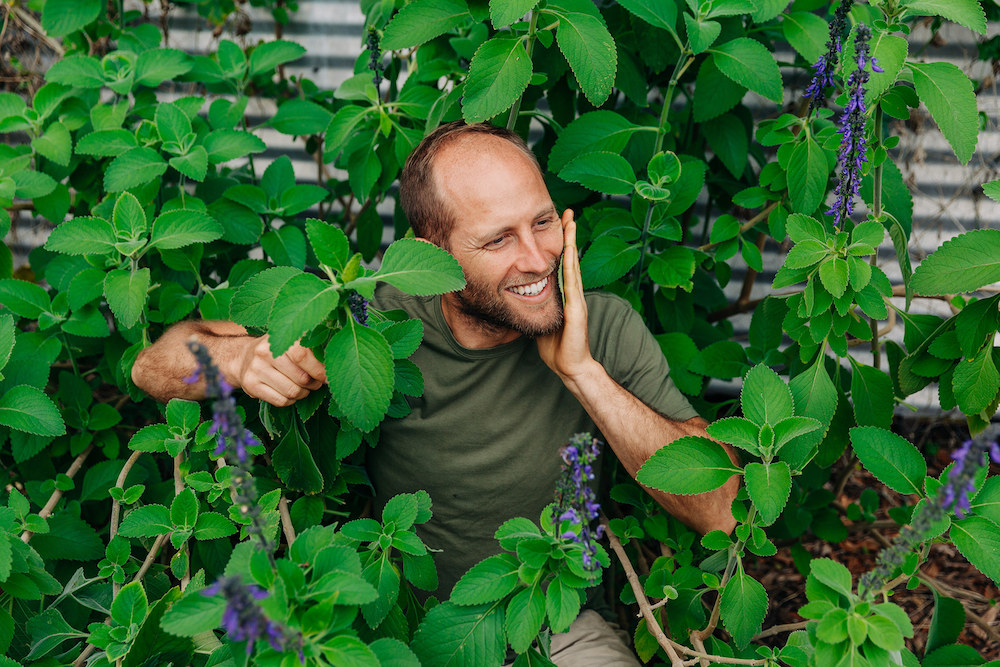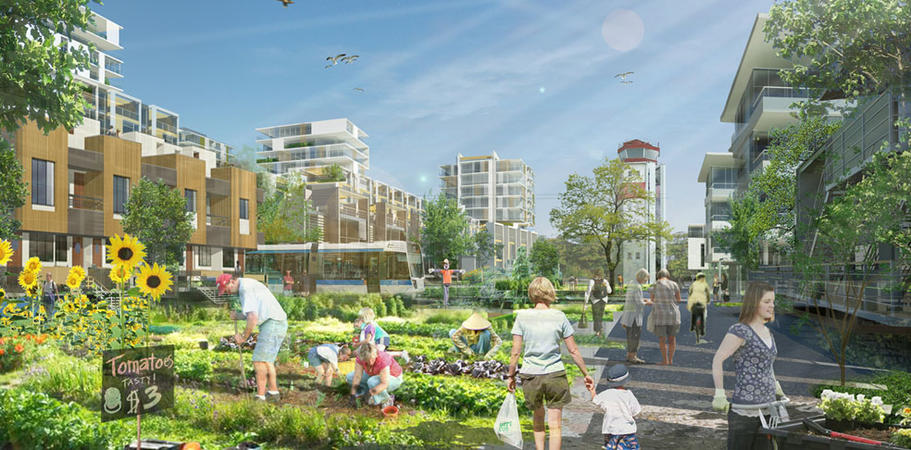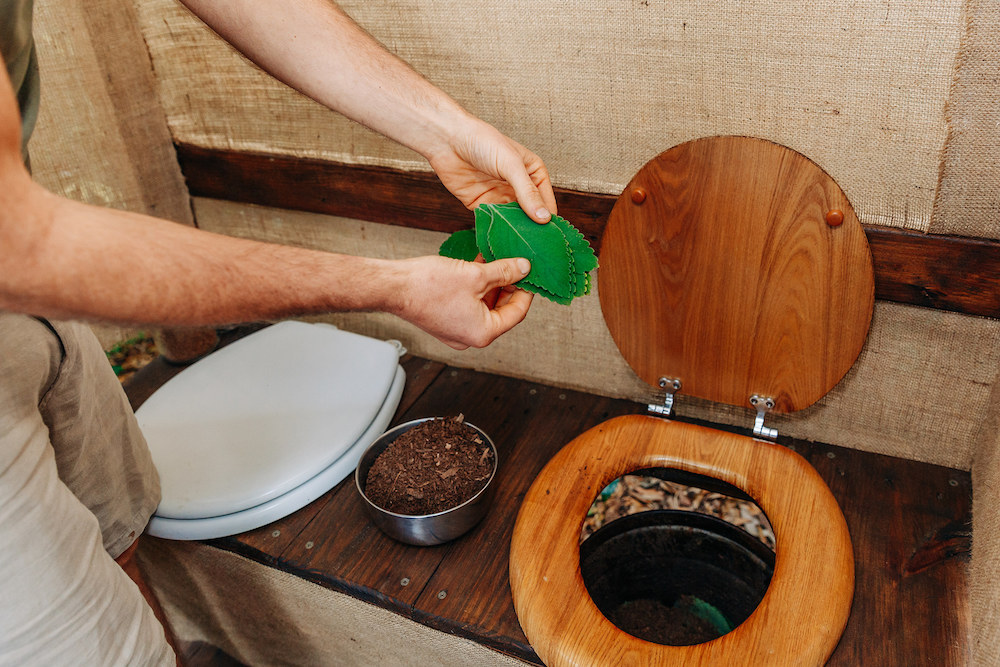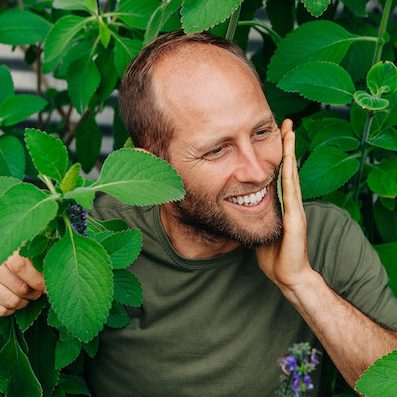Editor’s Note: Who remembers the “Great Toilet Paper Shortage of 2020”? All of us, right? We remember going into lockdown worried about this new COVID-19 illness, and then, BAM! Everyone was hoarding toilet paper and the supply chain was completely shut down, so we weren’t getting replacements fast enough. Now, three years later, toilet paper is still a hot commodity, and prices continue to rise for this single-use household staple.
But, what if you could grow your own toilet paper? According to environmental activist Robin Greenfield, you can do just that.
Greenfield’s Grow Your Own Toilet Paper Initiative is about supporting thousands of people in switching to homegrown toilet paper in 2023 by providing cuttings or seeds (depending on the climate where you live) for a nominal donation. These provisions can grow large enough “Toilet Paper Plants” to save participants from buying toilet paper for the rest of their lives.

When I moved to Orlando, Florida in 2018 I planted two cuttings of the Toilet Paper Plant that a friend gave me, and within one year I had a TP bush abundant enough to support a family of five, plus cuttings to share with hundreds of friends each year so they could grow their own TP too!
Here are a few of my favorite reasons to grow your own toilet paper:
-
-
- These plants are easy to grow. They are great for beginner growers or even as a first plant! They can be grown in the ground or in pots.
- These plants thrive! Even if you aren’t ready to make the switch to your homegrown TP, you can plant it now so you have it in case there’s a pandemic with a TP shortage. But let’s be real, we don’t need to wait for that. These leaves are the Charmin of the Garden!
- Growing your own TP is like printing your own money! The average person works two months of their life at a 40-hour job just to pay for the paper to wipe their butt.
- Opt out of consumerism! According to one study, the average U.S. household of 2.6 people uses about 400 regular rolls of TP per year. Growing your own TP is one more step in breaking free from the consumer lifestyle.
- We are flushing our planet down the toilet. We’re chopping down trees, burning fossil fuels, and polluting our waterways by pooping in clean water. The compost toilet and toilet paper plan are a step forward in living in harmony with Earth.
- Wiping your butt with leaves is humbling. If yoga hasn’t humbled your ego enough yet, try these leaves.
-
 |
How to share: 300 guides to help your community thrive |
Which plants and why?
For warmer climates, like Florida, we recommend growing the Blue Spur Flower (Plectranthus barbatus). Why? Because it is one of the easiest-to-grow plants, it’s great for beginners. It can be grown in the ground or in pots, and it thrives.
If you’re not convinced, here are eight reasons why to use the Blue Spur flower:
-
-
- The leaves are very soft — softer than many toilet papers on the market.
- The leaves are strong and durable. (Your fingers will not break through when wiping.)
- The leaves often grow about the same size as a store-bought piece of toilet paper.
- On dewy mornings, these furry leaves hold onto moisture, so they double as a wet wipe.
- It is in the mint family (Lamiaceae), so it has a fragrant minty smell!
- The flowers attract hummingbirds!
- The leaves are used in Brazilian culture as tea for an upset stomach. (Not after using it on the bum of course!)
- The leaves can be harvested and last up to three weeks before use, retaining their softness, durability, and strength.
-
For areas with cold winters that freeze over, we suggest mullein (Verbascum thapsus), which has been used as toilet paper for hundreds of years, due to its large, soft, fuzzy leaves.
If you live in cooler climates, here are four reasons to grow Mullein:
-
-
- The leaves are some of the softest growing in the northern hemisphere, perfect for the sensitive spots of the body.
- Grows quite easily from seed.
- Prolific, self-seeding plant (once established), meaning your toilet paper supply will multiply.
- It’s an herbal medicine that millions of people work with.
- Drought tolerant, and does best in dry soils.
-
How to grow the Toilet Paper Plant*
-
-
- The Blue Spur plant is low maintenance and it doesn’t require highly fertile soil, needs minimal water, and we’ve rarely seen any insect damage except a few bites here or there.
- The plant starts via a cutting. We provide cuttings of the plant to get started, which are simply a 6″-9″ cutting of one of the branches. These cuttings can then be planted in a small pot (such as a 4”x4” pot) to be nurtured for a few weeks to a couple of months until it has established roots and leaves. Then it can be transplanted in the ground or to a larger pot.
- We’ve seen two 8″ cuttings grow into a 10-foot by 6-foot Toilet Paper Plant patch within a few years, while it was still being heavily used for both toilet paper and propagation.
- Proper pruning will create a bushy plant that produces ample toilet paper for at least one person.
- Once established, you can easily take cuttings from your own Toilet Paper Plant to plant more of it and provide cuttings to help others grow their own TP, too. Plant people know that plants create abundance, so much so that we have plenty to share with our communities.
-
*Additional instructions for growing Mullein can be found here (will be available 5/1/23).
How to use the Toilet Paper Plants
Like any plant, some people may have an allergic reaction. Be safer than sorry, and before you try the leaves on your bottom, swipe the leaf across your hand or wrist, and wait 24 hours. If no reaction occurs, the leaf will most likely be safe to use on more sensitive areas (but it’s best to test that as well before regular use).
-
-
- Simply wipe your butt, and then have a plan for where you’re going to put the used leaves.
- Our favorite plan is to use them with a compost toilet. Simply drop the leaves into any compost or dry toilet.
- If you have a flush toilet, you can place a small bucket next to it for used leaves. Then take them outside and compost them or bury them in the yard. Having a bucket for used TP is a common practice throughout many regions of the world where the septic systems need more gentle care.
- We have not experimented with flushing the leaves and our recommendation is to not flush them.
-
See Greenfield and the Toilet Paper Plant in person
Greenfield is taking his Toilet Paper Plant on a two-week tour of Florida from April 27th–May 9th, 2023. In each major city, Robin will set up his compost toilet and his plants on either side of him, to introduce this alternative, environmental way forward to all who are interested.
- April 27th: Gulfport from 5-8 PM SumitrA Espresso Lounge +, (2838 Beach Blvd S.)
- April 29t: St. Petersburg from 11 AM–2 PM Saturday Morning Market (at 1st St. entrance)
- April 30th: Tampa from 5-8 PM Curtis Hixon Waterfront Park
- May 3rd: Orlando from 5-8 PM Lake Eola Park (at N Osceola Ave & E Central Blvd intersection)
- May 4th: Daytona Beach from 11 AM-1 PM Ormond Beach Farmers Market
- May 4th: Jacksonville from 5-8 PM Downtown Jacksonville (exact location TBD)
- May 5th: St. Augustine from 12-2 PM Plaza de la Constitución
- May 5th: Gainesville from 5-8 PM Bo Diddley Plaza Plaza (Friday night concert series)
- May 6th: Fort Myers from 5-8 PM Downtown Fort Myers Library Plaza (2450 First St)
- May 9th: Miami Beach from 5-8 PM Lincoln Rd & Alton Rd intersection
How to get your starter plants in the mail*
We have a Toilet Paper Plan for nearly every region of the United States. You can still request your Toilet Paper Plant: by making a sliding-scale suggestion donation to the initiative, and we will send you cuttings of blue spur flower, or seeds of mullein (depending on where you live), plus instructions to be successful in growing your own TP! Request plants in the mail here.
*Note, we do not sell plants. We are a non-profit providing resources to be of service to Earth, humanity, and our plant and animal relatives. The funds raised from this initiative support our food sovereignty initiatives. Learn more about Regeneration, Equity and Justice.
Additional Resources from Robin Greenfield:
Looking for more ways to share? Check out Shareable’s growing collection of over 300 how-to guides to save money, reduce waste, and build community through sharing.









